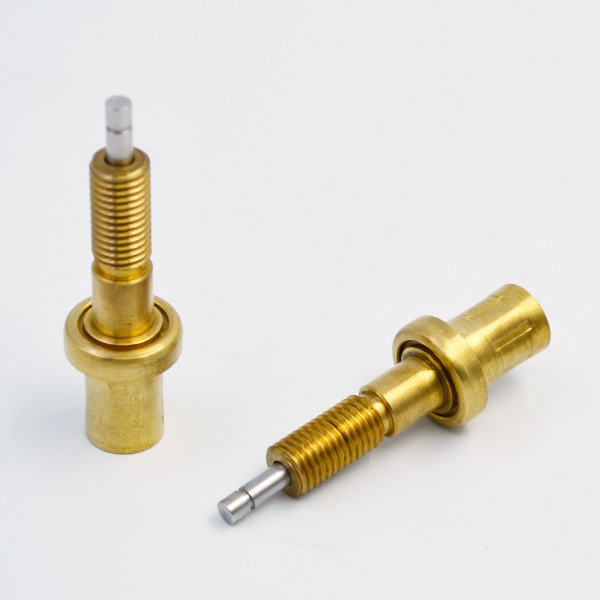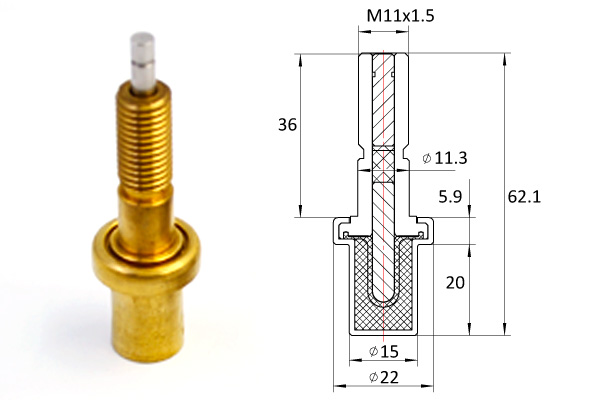The temperature controller based on PID regulation is widely used in modern temperature measurement system. This technology has the advantages of simple implementation and eliminating steady-state error. However, most of these instruments in the market use analog PID controller to control temperature, thermostatic element and using computer software to realize PID control algorithm has greater flexibility and reliability than analog PID controller. Based on this, this paper studies the realization method of digital PID controller on the basis of analog PID controller. In recent years, with the development of economy and the progress of science and technology, resistance furnace has been widely applied in the industrial production field.

Whether in metallurgy, power industry, petrochemical industry or machinery industry, its major technical and economic indicators are inseparable from the application of resistance furnace. Resistance furnace plays an important role in the stability and reliability of temperature control for the development of major industrial enterprises, and its temperature measurement and control technology has gradually become one of the important technologies in the current development of science and technology.

But in the actual temperature measurement and control, resistance furnace has strong interference and lag, and electric heating furnace has some unidirectional and time-varying in temperature control, so it is difficult to ensure the accuracy of parameters only by using mathematical methods. The effective control of temperature has the most direct effect on the whole activity. Because of many control objects and complex factors, the means of temperature control are more diversified.

Among all kinds of temperature control methods, PID control technology can effectively avoid steady-state error and meet the application requirements of related systems to a large extent. Digital PID technology is more flexible and reliable than analog PID technology. In this paper, the digital PID realization of temperature controller is studied and analyzed. The overall design sketch of the digital PID temperature controller is shown in Figure 1. In this system with STC89C52 single chip computer as the core, the electric heating furnace can be heated as the control object, the real-time temperature value is the controlled parameter, the preset temperature of the electric heating furnace can be set by several related keys on the control panel of the system, the real-time temperature of the electric heating furnace can collect weak voltage signal through the thermocouple, through signal amplification and data acquisition and analog transmission of the single chip computer. In addition, the MCU will use the internal program to realize the digital PID control algorithm, and the output of the PID will act on the drive circuit containing bidirectional thyristor to realize the power regulation of the electric heating furnace.
STC89C52 is an 8-bit MCU with Intel 80C31 core. It is very cheap, has high performance and low power consumption. The typical power consumption in normal working mode is only 4-7mA. It is fully compatible with MCS-51 series MCU in pin arrangement, hardware resources and instruction system. In this paper, the chip is used, and the experiment proves that it can accomplish the task of programming well.
Because the output voltage signal of thermocouple is analog, in order to make its signal recognized by single chip computer, A/D conversion is needed. On the A/D conversion chip, this paper chooses the successive approximation 8-bit A/D conversion chip ADC0809. There are 8 analog switches in the chip, which can input 8 analog signals. Unipolarity, ranging from 0 to 5V. When the external CLK is 640kHz, the typical conversion speed is 100s. There is a three-state output buffer in the chip, and the data output terminal can be directly connected with the data bus. Its performance-price ratio has obvious advantages, and can be applied to occasions where the accuracy and sampling speed are not required high or in general industrial control fields. The temperature sensor used in this system is the K-type thermocouple of WRNM-0l. Thermocouples mainly measure the surface temperature of static objects with different shapes in the range of – 50 to 1100. Thermocouple collects voltage signal of millivolt level, and the signal is relatively weak. Differential operational amplifier is needed to amplify the voltage signal properly so that it can be effectively received and processed by single chip computer. This system uses INA118 operational amplifier (produced by B-B Company of USA), which belongs to a kind of precision instrument amplifier. This kind of amplifier not only has high precision and low power consumption, but also has wide working frequency bandwidth and high common mode rejection ratio. It can effectively amplify all kinds of small signals.
In addition, the current feedback structure of INA118 has great uniqueness. Even if the gain is high, the bandwidth can be maintained at a high level. Proportional (P) controller, proportional-integral (PI) controller, proportional-differential (PD) controller and proportional-integral-differential (PID) controller composed of proportional, integral and differential control laws can be used for controlled objects with different requirements and obtain satisfactory control results. Proportional controller has the characteristics of step response. The smaller the proportional coefficient Kp is, the weaker the control effect is, and the slower the system response is. On the contrary, the larger the proportional coefficient Kp is, the stronger the control effect is, and the faster the system response is. Although the proportional controller has a fast response speed, it can not eliminate the static error, while the integral controller can eliminate the static error, but the action is slow. Based on this, the two complementary proportional integral controller is introduced to eliminate the deviation under the premise of ensuring sufficient reaction speed. Integral control can eliminate static error, but it also reduces the response speed of the system. When the system has large inertia and lag characteristics, it is difficult to obtain ideal dynamic regulation quality with PI controller, and the system will produce large overshoot and oscillation. At this time, differential control can be added to PI controller, which can produce regulation effect at the moment when the deviation appears or changes, making the system possible. According to the variation trend of deviation, the control action (differential control action) is given in advance, which greatly reduces the dynamic deviation and regulation time of the system, and improves the dynamic regulation quality of the system. The PID thermostat in this article is designed and manufactured based on this principle. In this paper, the positional PID control algorithm is adopted. First, the analog PID control formula should be digitized, and then the digital PID control can be realized on this basis.
In order to obtain discrete data, the continuous signal is discretized. The processor is set to sample the continuous signal every other time T, and the discretization process is completed by numerical approximation. In formula: t = kT, k = 0, 1, 2,… T is sampling period; K is sampling serial number; e (kT) is abbreviated as e (k), i.e. T is omitted. In the formula, u (k) is the control quantity of computer operation at the k-th sampling time, e (k) is the deviation quantity at the k-th sampling time and E (k-1) is the deviation quantity at the k-1 sampling time. The control quantity u (k) calculated by formula (3) can be directly used to control the position of the actuator. The value of u (k) corresponds to the position of the actuator. The control algorithm is written by Keil C51, which is a 51 series of compatible MCU C language software development system produced by Keil Software Company in the United States. Keil provides a complete development plan including C compiler, macro assembly, connector, library management and a powerful simulation debugger.
These parts are combined by an integrated development environment (mu Vision). Because of its convenient and easy-to-use integrated environment and powerful software simulation debugging function, it has been favored by everyone.
Firstly, parameters such as KP, TI, TD and T are set up, and parameters such as R (k), y (k) are sampled and input by sensors. Then, the MCU calculates and processes these data according to the algorithm shown in the block diagram of Figure 2. Finally, the appropriate control quantity is output to complete the adjustment of temperature. Whether in metallurgy, power industry, petrochemical industry or machinery industry, its major technical and economic indicators are inseparable from the application of resistance furnace.
Resistance furnace plays an important role in the stability and reliability of temperature control for the development of major industrial enterprises, and its temperature measurement and control technology has gradually become one of the important technologies in the current development of science and technology. Through the digital analysis of the temperature controller based on the PID control principle, this paper concretely expounds the related technical principles of PID digital design of the thermostat. In hardware, we strive to select low-cost, high-quality, low-power, high-performance electronic components. Temperature controller based on digital PID technology can realize real-time and efficient temperature control. It has a wide market application value. At present, it has a good application in resistance furnace, industrial temperature control, laboratory temperature control system, agricultural greenhouse temperature control and other fields. The digital PID temperature control technology discussed in this paper has very high commercial application value and development prospects.
